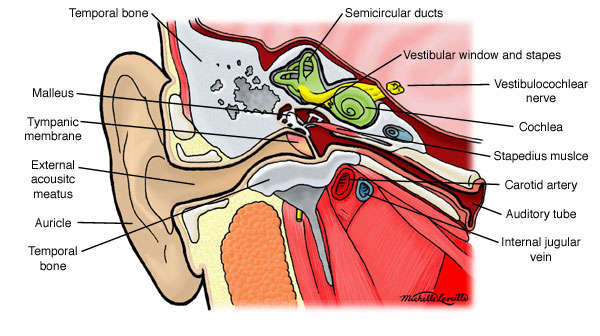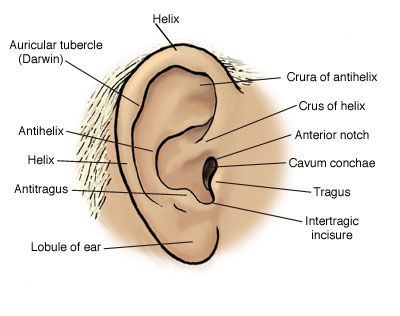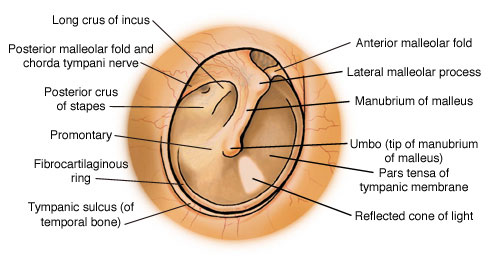

Anatomy of First Aid: A Case Study Approach
Ronald Bergman, Ph.D.
Peer Review Status: Internally Peer Reviewed

A petty officer second class took a boat full of supplies to a Marine base located on an island in the South China Sea. While waiting for his boat to be unloaded he found an isolated place to take a nap. When he awakened he heard a buzzing in his ear and became panicked and tried to remove the insect with his little finger to no avail - but the buzzing stopped. A corpsman, assigned to the Marines and who was on the island at the time, told the Sailor the following important things to remember when there are problems with the ears. If there are foreign objects in the ear do not use any liquid to flush the offending object from the ear. Do not place any instrument or tool in the ear canal. Do not hit or thump the head to free and dislodge the offending object. The corpsman suspected that an insect became trapped in the ear. The corpsman had an otoscope in his medical kit and was able see, and to remove, the crushed insect. The corpsman suggested several things that could be done in the absence of immediate medical care. If a live insect is in the external auditory canal one can safely kill the insect with a few drops of alcohol. However, seek medical assistance as soon as possible to remove the insect. The rationale for not putting water in the ear is that some objects swell in water, leading to significant pain and greater difficulty in removal of object.

Objects that are clearly visible and easily accessible at the entrance of the canal may be removed with a tweezers. A physician should be consulted to confirm the removal of the object(s). To the inexperienced, trying to remove objects with a tweezers can result in damage to the eardrum. One additional method, short of medical treatment, is for the individual to turn his head, with the affected ear down, and to shake his head. Do not try any other procedure -- no oil, water or hitting the head. The corpsman will safely remove the object.
Drainage from the ear is another serious event. If there is bleeding from the ears consider a skull fracture; immediate medical attention is essential. If bleeding is from the external ear, it may be controlled by direct pressure with a sterile or clean cloth. Do not try to stop drainage or bleeding from inside the ear. Do not allow the patient to thump his head to restore lost hearing. Have the patient lie on the side of the head that is affected to promote drainage.
Ear drum

Ear emergencies requiring medical care may include the following: swimmer's ear usually caused by bacteria; varieties of ear pain from middle ear infections, toothache, and mandibular joint pain; excess wax in the ear and perforation of the ear drum resulting in a loss of hearing; poking irritating hard objects into the ear and the introduction of foreign objects.
Swimmer's ear may result in disturbing sensations from retention of water in the ear. This can be avoided by placing a few drops of a solution containing 20% white vinegar or dilute 20% rubbing alcohol in the external acoustic canal.
Please send us comments by filling out our Comment Form.
All contents copyright © 1995-2025 the Author(s) and Michael P. D'Alessandro, M.D. All rights reserved.
"Anatomy Atlases", the Anatomy Atlases logo, and "A digital library of anatomy information" are all Trademarks of Michael P. D'Alessandro, M.D.
Anatomy Atlases is funded in whole by Michael P. D'Alessandro, M.D. Advertising is not accepted.
Your personal information remains confidential and is not sold, leased, or given to any third party be they reliable or not.
The information contained in Anatomy Atlases is not a substitute for the medical care and advice of your physician. There may be variations in treatment that your physician may recommend based on individual facts and circumstances.
URL: http://www.anatomyatlases.org/